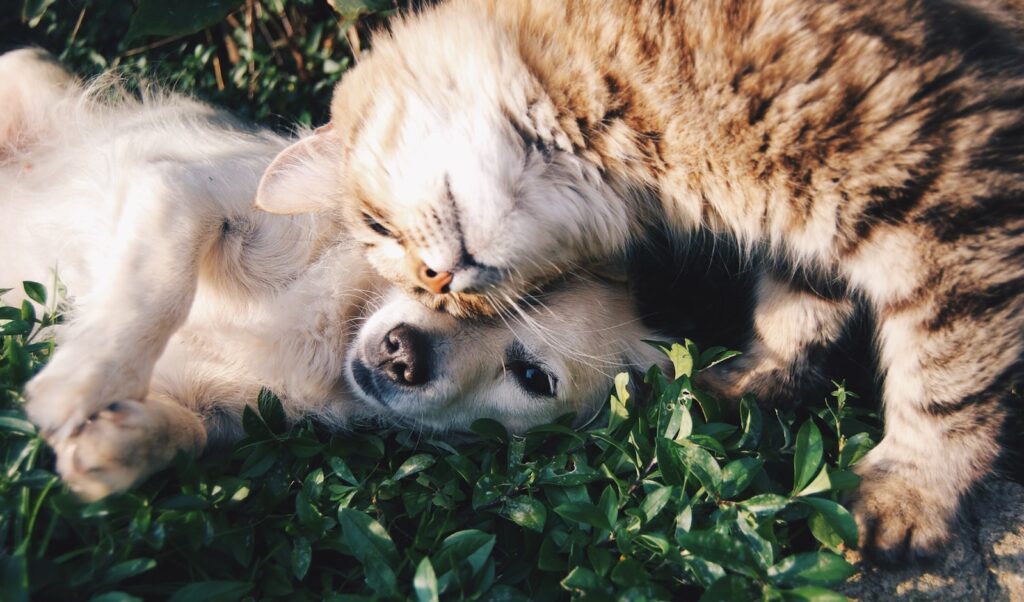The nose of your beloved pet is more than just an adorable feature; it’s a marvel of nature that serves several surprising purposes. You probably think of your dog’s cold, wet nose or your cat’s little twitching sniffer as simply tools for smell, but there’s so much more to these fascinating organs. Did you know?
“Your pet’s nose is not only an extraordinary sensor but also plays a critical role in their overall health and well-being!”
From temperature regulation to unique identification, your pet’s nose is a powerhouse of functionality. In this article, we will delve into the single most fascinating fact about your pet’s nose that you may be completely unaware of. Ready to be amazed? Keep reading!
What unique abilities do pet noses have?
One of the most unique abilities of pet noses, especially in dogs, is their incredible sense of smell. A dog’s nose has up to 300 million olfactory receptors, compared to about 6 million in humans. This allows them to detect scents at concentrations nearly 100 million times lower than what humans can perceive. Cats, while not as renowned for their olfactory prowess as dogs, also have a highly developed sense of smell. They possess around 50 to 80 million olfactory receptors, which they use not only for detecting food but also for social interactions and marking territory.
Pets can use their noses to detect changes in human health. Dogs, for instance, have been trained to sniff out certain types of cancer, diabetes, and even impending epileptic seizures. Their ability to detect minute changes in human body chemistry makes them invaluable in medical detection and assistance roles. Another fascinating aspect of pet noses is their ability to sense pheromones. Both dogs and cats have a specialized organ called the vomeronasal organ (or Jacobson’s organ) that helps them detect these chemical signals, which play a crucial role in communication, mating behaviors, and social bonding.
Pets can also use their noses to navigate and find their way home. Dogs, in particular, have an extraordinary ability to track scents over long distances and through complex environments. This homing ability is often attributed to their acute sense of smell combined with their spatial memory. The moisture on a pet’s nose plays a critical role in its olfactory capabilities. The wet surface helps to capture scent particles more effectively, enhancing their ability to detect and analyze smells. This is why a dry nose in pets can sometimes indicate health issues.
The moisture on a pet’s nose plays a critical role in its olfactory capabilities. The wet surface helps to capture scent particles more effectively, enhancing their ability to detect and analyze smells. This is why a dry nose in pets can sometimes indicate health issues.
- The right nostril is used to detect novel or alarming odors, while the left nostril is used for familiar or non-threatening smells.
- Environmental factors such as relative humidity and barometric pressure can significantly affect a pet’s sense of smell.
- Olfactory abilities can decline with age, similar to how they do in humans, affecting pets older than 14 years.
- Dogs also use scent detection as a means of welfare and mental stimulation, making sniffing a natural and necessary behavior.
- Nutritional factors, including the timing and type of meals, can influence a pet’s olfactory sensitivity.
- Physical stressors such as lack of exercise or poor conditioning can have a direct or indirect impact on a pet’s sense of smell.
- Training techniques for detection dogs can improve their odor sensitivity and discrimination abilities.
- Exposure to viral diseases or certain medications can affect olfactory function in pets.
How do pet noses compare to human noses?
Pet noses, especially those of dogs and cats, are incredibly more sensitive than human noses. While humans have around 5 million olfactory receptors, dogs can have up to 300 million. This vast difference allows pets to detect scents at concentrations nearly 100 million times lower than what humans can perceive. The structure of pet noses is also uniquely adapted to enhance their sense of smell. Dogs, for example, have a specialized organ called the vomeronasal organ, or Jacobson’s organ, which is located inside the nasal cavity. This organ is responsible for detecting pheromones, chemical signals that play a crucial role in communication and behavior.
Another fascinating aspect is the way pets process scents. When a dog sniffs, it separates the airflow into two different paths, one for breathing and one for smelling. This allows them to continuously sample scents without interrupting their breathing, a feature that humans do not possess. Pets also have a larger olfactory bulb relative to their brain size compared to humans. The olfactory bulb is the part of the brain that processes scent information. In dogs, it is about 40 times larger than in humans, which significantly enhances their ability to interpret and differentiate between a vast array of smells.
The moistness of a pet’s nose also plays a critical role in its olfactory capabilities. The wet surface of a dog or cat’s nose helps to capture scent particles from the air, making it easier for them to analyze different smells. This is why you often see pets licking their noses to keep them moist. Interestingly, the patterns on a dog’s nose are unique, much like human fingerprints. These patterns can be used to identify individual dogs, adding another layer of uniqueness to each pet’s nose. This feature is not present in human noses, making it a fascinating point of comparison.
| Characteristic | Dogs | Cats | Humans |
|---|---|---|---|
| Olfactory Receptors | 220 million | 80 million | 5 million |
| Unique Nose Patterns | Yes | No | No |
| Moist Nose | Yes | Yes | No |
| Role of Nose Moisture | Captures scent particles | Captures scent particles | Minimal impact |
What role does a pet’s nose play in their daily life?
A pet’s nose is a highly sophisticated organ that plays a crucial role in their daily life. Dogs, ‘ sense of smell is estimated to be between 10,000 to 100,000 times more sensitive than that of humans. This extraordinary olfactory capability allows them to detect a wide range of scents, which is essential for various activities such as hunting, tracking, and even identifying individuals or other animals. In addition to its role in detecting scents, a pet’s nose is also vital for communication. Animals like dogs and cats use their noses to gather information about their environment and other creatures. By sniffing, they can determine the presence of other animals, their emotional state, and even their reproductive status. This information is crucial for social interactions and establishing hierarchies within groups.
The nose also plays a significant role in a pet’s ability to navigate its surroundings. For instance, dogs rely on their sense of smell to create a mental map of their environment. This olfactory map helps them find their way home, locate food, and avoid potential dangers. The ability to detect minute changes in scent can alert them to the presence of predators or other threats. Moreover, a pet’s nose is involved in their overall health and well-being. A healthy nose is typically moist and cool, which helps to trap scent particles and enhance their sense of smell. Changes in the condition of a pet’s nose, such as dryness or excessive discharge, can be indicators of underlying health issues. Pet owners often monitor the state of their pet’s nose as a sign of their general health.
Finally, the nose is also a tool for emotional bonding between pets and their owners. Pets often use their noses to nuzzle and sniff their owners, which is a form of affection and recognition. This behavior strengthens the bond between pets and humans, contributing to the emotional well-being of both parties.
Are there any health indicators visible through a pet’s nose?
A pet’s nose can serve as an important indicator of its overall health. One of the most common observations is the moisture level of the nose. A healthy pet’s nose is typically moist, which helps with their sense of smell. However, a dry nose doesn’t necessarily indicate illness; it can be due to environmental factors like low humidity or recent sleep. Color changes in a pet’s nose can also signal health issues. For instance, a pale or white nose might indicate anemia or poor circulation, while a blue or purple nose could suggest a lack of oxygen. Conversely, a sudden change to a darker color might be a sign of hyperpigmentation or other skin conditions.
Crusting or sores on a pet’s nose can be a sign of various health problems. These could range from minor issues like a simple scratch or irritation to more serious conditions such as autoimmune diseases or infections. Persistent crusting or sores should be evaluated by a veterinarian. Discharge from the nose is another health indicator. Clear discharge is often normal, especially if it’s occasional. However, thick, colored, or foul-smelling discharge could indicate infections, allergies, or other respiratory issues. Consistent nasal discharge warrants a veterinary check-up.
Temperature changes in a pet’s nose can also provide clues about their health. While a warm nose isn’t always a cause for concern, a consistently hot nose might indicate fever or dehydration. Conversely, a very cold nose could be a sign of hypothermia or poor circulation. Lastly, the texture of a pet’s nose can reveal health information. A healthy nose is usually smooth and slightly moist. If the nose becomes excessively dry, cracked, or flaky, it could be a sign of dehydration, nutritional deficiencies, or underlying health issues that need to be addressed.
What scientific discoveries have been made about pet noses?
One of the most fascinating scientific discoveries about pet noses is their incredible olfactory capabilities. Dogs, for example, have up to 300 million olfactory receptors in their noses, compared to about 6 million in humans. This allows them to detect scents at concentrations nearly 100 million times lower than humans can. Another intriguing finding is that the structure of a pet’s nose is highly specialized. The moist, spongy surface of a dog’s nose helps to capture scent particles, while the complex nasal passages and turbinates increase the surface area for odor detection. This intricate design enables pets to process a vast array of smells simultaneously.
Recent studies have shown that pets can use their noses to detect medical conditions. Dogs have been trained to identify certain types of cancer, diabetes, and even impending epileptic seizures by detecting specific chemical changes in a person’s body. This ability has opened up new avenues for medical diagnosis and assistance. The Jacobsen’s organ, or vomeronasal organ, is another remarkable aspect of pet noses. Located on the roof of the mouth, this organ allows pets to detect pheromones, which are chemical signals related to social and reproductive behaviors. This capability is particularly well-developed in cats and plays a crucial role in their communication.
Research has also uncovered that the temperature and moisture of a pet’s nose can provide insights into their health and well-being. While a warm, dry nose doesn’t necessarily indicate illness, significant changes in the nose’s condition can sometimes signal health issues that may require veterinary attention.
- A dog’s nose print is unique, much like a human fingerprint.
- Sniffing enhances a dog’s ability to detect and process odors by keeping scents in their nasal passages longer.
- The color of a pet’s nose can change due to temperature, aging, or certain medical conditions.
- Dogs have up to 300 million olfactory receptors in their noses, compared to about 6 million in humans.
- Regular inspection of your pet’s nose can help detect abnormalities like cracks, sores, or unusual discharge, which may signal health issues.
Conclusion
Understanding the intricate capabilities of your pet’s nose can deepen the bond you share and enhance their well-being. From their unparalleled sense of smell to the unique role it plays in their daily activities, each sniff your pet takes is a testament to the incredible design and purpose of their noses. Science continues to unveil new aspects of this fascinating sensory organ, highlighting its importance in the overall health and happiness of our pets. So, next time you watch your furry friend sniffing around, remember, that there’s a whole world they are experiencing through their exceptional noses, a world we are just beginning to understand.



